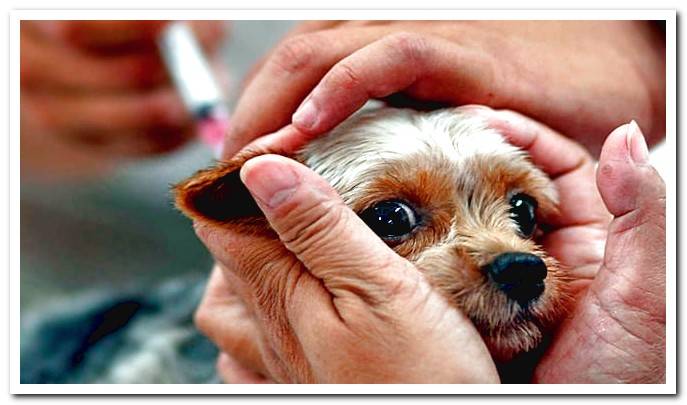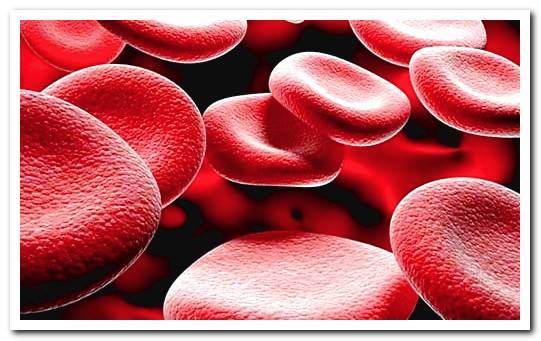
Hemolytic anemia in dogs is a rare disease, but it can cause really serious health problems if no treatment is applied.
When this type of anemia occurs, red blood cells are destroyed prematurely, leading to fewer functional red blood cells.
In order for you to recognize the signs of hemolytic anemia in the dog, from Dogsis we will detail some of the most frequent symptoms and end this article by talking about the main existing treatment options.
Index of contents
- 1 Types and causes of hemolytic anemia in dogs
- 2 What are the symptoms of canine hemolytic anemia?
- 3 Treatment for canine hemolytic anemia
- 4 Care for a dog with hemolytic anemia
Types and causes of hemolytic anemia in dogs
The factors that may be behind hemolytic anemia in dogs are diverse. One of the main causes is defective hemoglobin in red blood cells. And what is hemoglobin? Well, an important component of blood for the regulation of its PH and for the proper functioning of the body.
Another variant is autoimmune hemolytic anemia, a well-known condition that occurs when the dog’s body begins to generate antibodies against red blood cells. The organism identifies them as foreign bodies and they end up destroying healthy red blood cells.
Finely there may also be an induced hemolytic anemia, either by an infection or by some drugs that can cause an allergic reaction or poisoning in the dog.
Knowing the underlying cause of anemia, in short, is important so that the treatment fits the diagnosis and can be much more effective. So that we understand each other: each type of hemolytic anemia in dogs has a different cause and therefore requires different treatment. And is that hemolytic anemia due to hereditary causes is not the same as one caused by disease.

What are the symptoms of canine hemolytic anemia?
It is true that distinguishing one hemolytic anemia from another corresponds to a professional, but what we can detect are some signs in the dog that indicate that it is not in good health. The most common symptoms of hemolytic anemia in dogs are:
- Fatigue and weakness. The dog gets tired when running at close range.
- Dark-colored urine or blood in the urine.
- Breathes fast and is short of breath (in fact, this is one of the first symptoms to appear).
- He has fever
- Convulses
Internally there may also be other obvious signs, such as a decrease in folate levels or spleen hypertrophy, the organ that helps control the amount of blood in the body and is responsible for destroying aged or damaged cells. Most of these symptoms, however, appear when the disease is already advanced.
Treatment for canine hemolytic anemia
Hemolytic anemia can affect all types of dogs, regardless of their breed or age. To confirm if a dog suffers from it, we must take it to the vet so that they can perform diagnostic tests, such as x-rays, ultrasounds and analysis. Only a professional will be able to determine what treatment options are available.
These will vary according to the severity of each case and the type of hemolytic anemia that has been detected. Usually, for autoimmune hemolytic anemia in dogs steroids are used. This is common, especially if the disease is still in its initial phase, since they help to control it better.

In cases where hemolytic anemia is more advanced, you may need to have a blood transfusion. This treatment is only recommended on the most serious occasions, since in some dogs it can worsen the situation.
Sometimes the dog may also need an extra supply of folic acid or fluids to prevent dehydration. If hemolytic anemia is the result of a disease, such as infectious mononucleosis or canine pneumonia, this disease must first be combated in order for the dog’s health to improve.
When hemolytic anemia has arisen as a reaction to a drug, it is possible that our canine friend needs a stomach wash or that a medication is administered to counteract the effects of the drug or the poison he has ingested.
Care for a dog with hemolytic anemia
What is clear is that every dog with hemolytic anemia will need a lot of attention. So while you are recovering, it is important that you can be calm and it is not good for you to play too much with us or to do excessive physical activity.
Keep in mind that you are convalescing and, as with sick people, what you need is rest and a special diet, with quality food that nourishes you adequately.
Finally, do not forget to administer the medication that a professional indicates and take you, without excuses, to all the reviews that they indicate, since hemolytic anemia in dogs is a serious disease. At times like these, it’s when your furry friend needs you most … and you can’t let him down.
